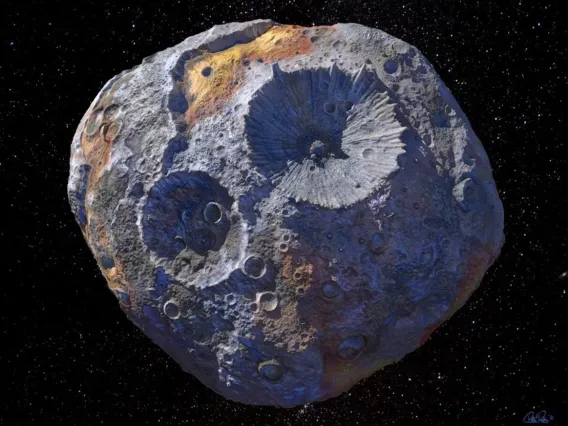LPL Spotlight Stories

Explaining Bennu’s Mysterious Particle Events
NASA's OSIRIS-REx science team has identified three possible explanations for the particles that asteroid Bennu is tossing into space.

First Results from Spacecraft Exploring Sun
The sun is revealing itself in dramatic detail and shedding light on how other stars may form and behave throughout the universe. LPL researchers involved in the mission report exciting findings from the Parker Solar Probe's first close encounters with our very own star.

Close Encounter with the Sun
Two LPL researchers involved in NASA's Parker Solar Probe mission are excited about the spacecraft's first close encounters with the sun.

UArizona Moon Researchers Helped NASA Nail Apollo 12 Pinpoint Landing
Lunar and planetary scientist Ewen Whitaker used his incomparable knowledge of lunar geography to help NASA demonstrate a pinpoint landing on the moon with Apollo 12.

Mysteries Behind Interstellar Buckyballs Finally Answered
Mimicking conditions thought to exist around dying stars, researchers discovered a mechanism that could explain why planetary nebulae are teeming with complex carbon molecules.

The Origins of Buckyballs in Space
The spectroscopic fingerprints of buckyballs have been observed in space, but questions remain about how these large molecules form. Laboratory experiments have revealed a possible mechanism.

Space Science, Research Reputation Shine in Best Global Ranking
The University of Arizona ranked No. 21 among U.S. public universities and No. 85 overall in the sixth annual "Best Global Universities" ranking, published by U.S. News & World Report.

Beyond Jupiter, Researchers Discovered a 'Cradle of Comets'
Researchers have discovered a region just beyond Jupiter that acts as a "comet gateway," funneling icy bodies from deep space into the inner solar system, where they can become regular visitors of Earth's neighborhood.

Iron Magma Could Explain Psyche’s Density Puzzle
Volcanism has always intrigued humanity. Less than 50 years ago, scientists discovered cryovolcanism – ice volcanoes on other worlds. Now, researchers may have identified volcanoes of molten metal.

Today’s Students are Tomorrow’s Space Explorers
Ten students from Japan and Arizona gathered for the first official Space Camp at Biosphere 2, where they designed Biosphere 3 to sustain life on Mars.
Pagination
- First page
- …
- 16
- 17
- 18
- …
- Last page

